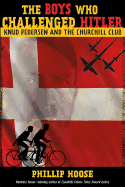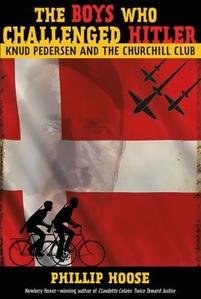

Pedersen was in eighth grade in Odense, Denmark, when the German military invaded on April 9, 1940. One day later, the Danish king and prime minister signed an agreement allowing Germany to occupy the country and control the government. Knud and his older brother, Jens, were "totally ashamed." Watching their classmates and neighbors continue life as usual, and even profit from the German occupation, the brothers decided that if the adults weren't going to fight back, they would. Knud, Jens, a cousin and two friends formed a resistance unit called the RAF Club ("after the heroic British Royal Air Force," according to Pedersen) and concentrated on acts of sabotage and propaganda--daringly perpetrated in broad daylight because of a curfew.
In 1941, Knud and Jens's father took a job in the northern city of Aalborg, a crucial link between Germany and Sweden, which supplied the homeland with iron ore for weapons. The brothers assembled a new group of friends and allies, named it the Churchill Club, and expanded their mission to include capturing weapons and building bombs. The audacity of their operations will boggle readers' minds. One day, Knud noticed a rifle in the open window of a German barracks and decided to steal it--despite a soldier cleaning a window in the next room.
In May 1942, the Churchill Club members were caught. Their conviction and subsequent imprisonment made them international heroes, and by the time the Pedersen brothers were released in May 1944, the Danish resistance had spread to such an extent that Germany declared Denmark "enemy territory." But the boys did not escape unscathed; several never recovered from their time in jail and either died young or lived unhappy lives.
In his author's note, Hoose says that he interviewed Pedersen for more than 25 hours, and ends with a touching acknowledgement of his admiration for Pedersen and for his work as member, spokesman and researcher for the Churchill Club. Hoose supplements the text with period photographs, diagrams and maps. Teens will be inspired by the bravery this young man showed in the face of great danger. --Angela Carstensen, school librarian and blogger
Shelf Talker: An account of an inspiring group of brave young teenagers in Denmark in World War II who stood up to the German occupation.

